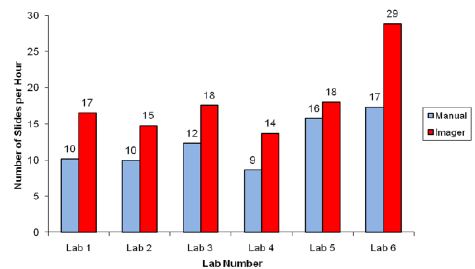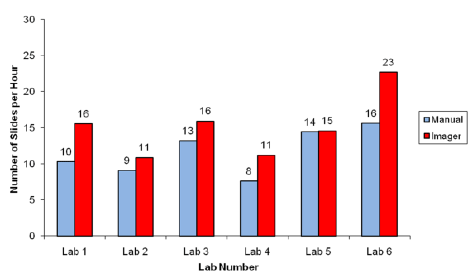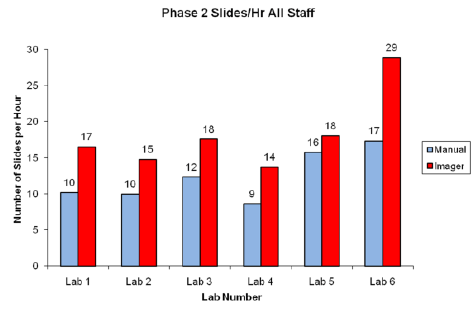Healthcare Science National Delivery Plan for Healthcare Science Professionals in Scotland 2014-2017
This is a consultation document as a first step to develop a National Delivery Plan which will enable us to agree priorities and set out how they will be delivered over the next 3 years.
APPENDIX 1
Cytology
Increased productivity while maintaining or improving quality. A PDSA Example
The Screening Programme
Cervical screening has proven to be an effective method of reducing the incidence and mortality of cervical cancer. Screening provides a test that involves checking cells in the cervix (neck of the womb) and a Human Papilloma Virus (HPV) test, where appropriate. The test is designed to pick up any changes so that they can be simply and effectively monitored or treated. Cervical screening saves around 5,000 lives in the UK every year and prevents 8 out of 10 cervical cancers from developing. Cervical screening is routinely offered every three years to women aged between 20 and 60 years of age.1
The Laboratory
The sampling of cells is through a small brush which is agitated in a preserving solution and transferred to the laboratory. It is prepared to a thin layer on a slide and stained to enhance the cellular features.
The slides are reviewed microscopically by a healthcare scientist and an assessment made on whether the sample is negative or showing some degree of abnormality.
This traditionally had been done manually with the healthcare scientist reviewing approximately 120 slide fields of view and many 1000s of cells to come to a conclusion and report.
The Study
New technology became available using computerized algorithms which highlighted automatically the 22 Fields of view most likely to contain an abnormality.
As part of a larger feasibility study to assess the use of this technology in NHSScotland it was assessed in 6 laboratory sites over 4 different health boards. It was assessed for quality, safety, clinical effectiveness and one aspect of the study was to look at productivity as well as staff satisfaction.

The Outcome/ Reflective Learning
Utilising the technology as per the manufacturers protocol over a period of 3 months produced results around productivity highlighted in Graph 1 below showing on average an increase of 7 cases per hour but the feedback from the staff indicated that the manufacturers protocol was a rate limiting step.
After a feedback session a new protocol was devised which indicated when cytologists found a suspected abnormal cell they could remove the slide to a standard microscope. This change was ‘off label’ for the company but produced the results indicated in Graph 2 showing an average increase of 12 slides per hour. All other quality indicators remained the same.
The reflective learning was around studying early results and adapting based on the evidence supported feedback from staff.
This was just one aspect of the study and the technology has now been adopted across NHSScotland yielding significant productivity gains and maintaining or improving quality.
Graph 1

Graph 2

1 http://www.nsd.scot.nhs.uk/services/screening/cervicalscreening/
Contact
Email: CNOPPP Admin Mailbox
There is a problem
Thanks for your feedback